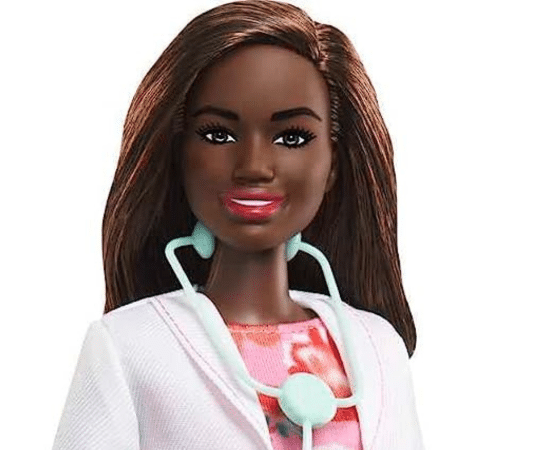While the 2023 film Barbie stole the show with a fresh and topical take on women’s empowerment and gender diversity, the doll range needs to take more steps to up its diversity game.
A recent study published in the British Medical Journal or BMJ has revealed that Barbie should aim to spread her medical and scientific careers into areas that had fewer women and other diversity strands.
The study observed that the fashion doll portrayed different roles undertaken by women– worker, teacher, and vet to a judge alongside a scientist and medical doctor. These are a broad range of roles that children can aspire to while growing up.
Researcher Katherine Klamer aimed to spot the kinds of medical and scientific fields Barbie dolls were depicted as working in, comparing them with other career dolls to ascertain if they adhered to clinical and laboratory safety standards.
Katherine based her analysis on 92 Barbie brand career dolls. These comprised 53 doctors, 10 scientists, 2 science educators, 15 nurses, 11 dentists, and 1 paramedic. She compared the group of 65 non-Barbie brand career dolls (26 doctors, 27 scientists, 7 nurses, 2 dentists, 2 engineers, and 1 MRI technician) from July to November 2023.
The study analyzed clothing, accessories, packaging, and safety accessories were assessed, as per Indiana University guidelines.
Barbie brand career dolls were portrayed as adult (98%), female (93%), and white (59%). However, none of the dolls depicted a visible disability. Among the comparison set of dolls, 32% were white, and one doll had a prosthetic arm.
Barbie brand medical professional dolls mostly treated children (66%) with only three dolls (4%) depicting those working with adult patients.
Except three ophthalmologist dolls, Barbie brand doctor dolls appeared to have either no specialty or were pediatricians with no apparent subspecialty.
Barbie brand dolls had laboratory coats, microscopes, stethoscopes, and glasses. However, they did not comply with professional safety standards for their respective fields. For example, 98% of the Barbie brand doctor dolls came with stethoscopes but only 4% had face masks, and none had disposable gloves.
Studying 12 scientist Barbie brand dolls, the study said that none of them met all proper personal protective equipment requirements related to hair and clothing.
The study added that while comparison dolls offered a wider range of age and ethnic groups than the Barbie doll group did, they did not portray a wide range of medical and scientific subfields. Comparison brand dolls lacked proper personal protective equipment, said the study.
“As surgeons in decidedly male-dominated fields, we support Klamer’s conclusion that Barbies should represent a more diverse field of medical and scientific professions and that safety comes before fashion,” Sareh Parangi and colleagues were quoted as saying, in a linked editorial.
The study also observed that while medical students were discouraged from opting for surgical roles, Barbie could help girls overcome sexist career assumptions and advice.
“We encourage and would welcome the creation of a surgeon Barbie and would be happy to advise Mattel on the correct accompanying equipment and PPE to make sure the doll is realistic and fun,” they added.






